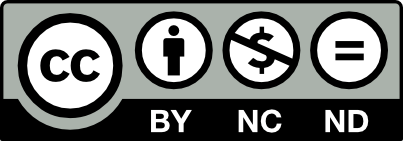This page is licensed under Creative Commons under Attribution 4.0 International. Anyone can share content from this page, with attribution and link to College MatchPoint requested.
The U.S. News College Ranking Trap: How We Have All Been Reading Them All Wrong
Every September, the new U.S. News college rankings arrive and families treat them like gospel. A school climbs five spots and parents cheer. A school slips seven and families start crossing it off the list. The trap is thinking those numbers reflect what your teen’s actual experience will be. They don’t.

Why the “Number” Misleads
The rankings make it look simple. No. 18 must be better than No. 22, right? But the gap between those two might be a fraction of a point in a formula, not a meaningful difference in teaching, support, or outcomes.
In 2024, U.S. News changed its formula significantly. It put more weight on outcomes like graduation rates for Pell and first-generation students, and less weight on factors such as alumni giving and class rank. Dozens of schools shot up or slid down overnight, not because the classroom experience changed, but because the formula did.
When the yardstick changes, the number changes. That’s the trap.
Stability at the Top Isn’t the Whole Story
The top of the list barely moves. Princeton, MIT, Harvard, Stanford, and Yale have kept their usual spots. That stability can make parents feel those schools are automatically the right choices. But the rankings are designed to keep the most selective schools clustered at the top. Stability does not mean those schools are right for every student—or even affordable for most families.
Real Examples of the Trap
Over the last five years, movement has often been more about formula changes and data reporting than real improvement:
- Columbia University fell from No. 2 to No. 18 in 2022 after its reported data was challenged. The drop was about inputs, not an overnight collapse in quality.
- University of Chicago and Caltech swapped places in 2026, with Chicago jumping into the top 10 and Caltech slipping to No. 11. The swing was driven by small score shifts, not a sudden reversal in academic strength.
- Northeastern University rose eight places to No. 46 in 2026. Yeshiva University jumped 14 places the same year. Those moves reflected how the formula rewarded their profiles, not dramatic overnight change.
- Rutgers University gained more than 20 spots at New Brunswick, with Newark and Camden rising even more since 2021. The outcome-heavy formula favored work Rutgers had already been doing, but the leap looked larger than the underlying changes.
- University of Texas at San Antonio jumped nearly 100 spots in 2024. That wasn’t because UTSA suddenly transformed in a year. It was because U.S. News gave more weight to outcomes that favored its student body.
- UC Berkeley and UCLA frequently swap as the top public university. Headlines make it sound like a big deal. In reality, the difference comes down to fractions in a formula.
What the Rankings Actually Measure
The rankings measure how a formula values things like graduation rates, resources, and selectivity. They do not measure whether professors mentor undergrads, how strong your teen’s program is, or what your family will pay after scholarships.
Think of them as an index of institutional standing inside a specific formula, not a direct read on your student’s future.
How to Read the Rankings Without Falling Into the Trap
- Look in bands, not single numbers. Treat schools ranked 11–25 as peers. Do not chase tiny differences.
- Check the formula. If a school leaps or drops, find out whether U.S. News changed the rules that year.
- Pull outcomes. First-year retention, four-year graduation, and outcomes by major are more reliable signals of student success.
- Price it correctly. Use the net price calculator for each school. Out-of-state publics can cost more than privates with merit aid, but the rankings won’t tell you that.
- Map the program. A school ranked No. 27 overall may be a leader in nursing or business and a stronger choice than No. 18 for that field.
- Track five-year trends. Build your own chart of retention, graduation, and net price. Positive trends matter more than short-term rank movement.
Build Your Own Scorecard
You can make your own “ranking” that actually reflects what matters to your family. Create a four-column scorecard:
- Student experience: Retention, graduation, access to required classes.
- Program strength: Outcomes in your teen’s intended major, internships, research opportunities.
- Price and aid: Net price for your household, merit ranges for students with your teen’s GPA and scores, typical time to degree.
- Fit: Location, campus culture, size, residential life.
Give each column a score from zero to five. Use that composite as your guide. Let the published rank be nothing more than a tie breaker.
Guardrails for Parents
- Big jumps often mean the formula changed, not the college.
- Top public swaps like Berkeley and UCLA are usually fractional.
- A celebrated leap, like UTSA’s in 2024, reflects methodology as much as campus change.
- A data scandal, like Columbia’s in 2022, is a reminder to check independent sources like the Common Data Set.
Bottom Line
The U.S. News rankings are a noisy signal of prestige, not a map for your student’s future. The trap is treating the number as a verdict. The last five years have shown again and again that methodology changes, reporting issues, and formula tweaks drive most of the movement.
Smart families use the rankings as a starting point. They find options, then dig into the outcomes, costs, and fit that actually matter. That’s how you keep the rankings in their place and focus on what will shape your student’s life.


